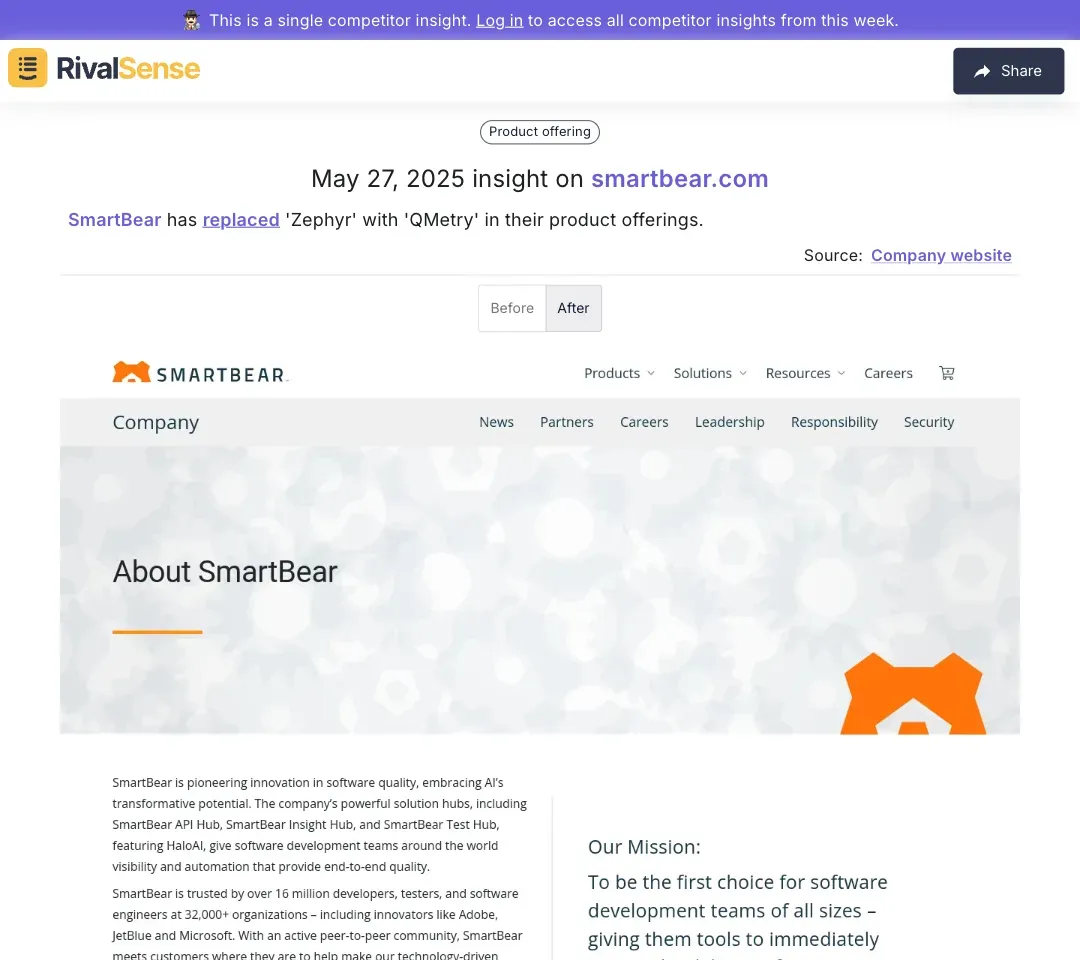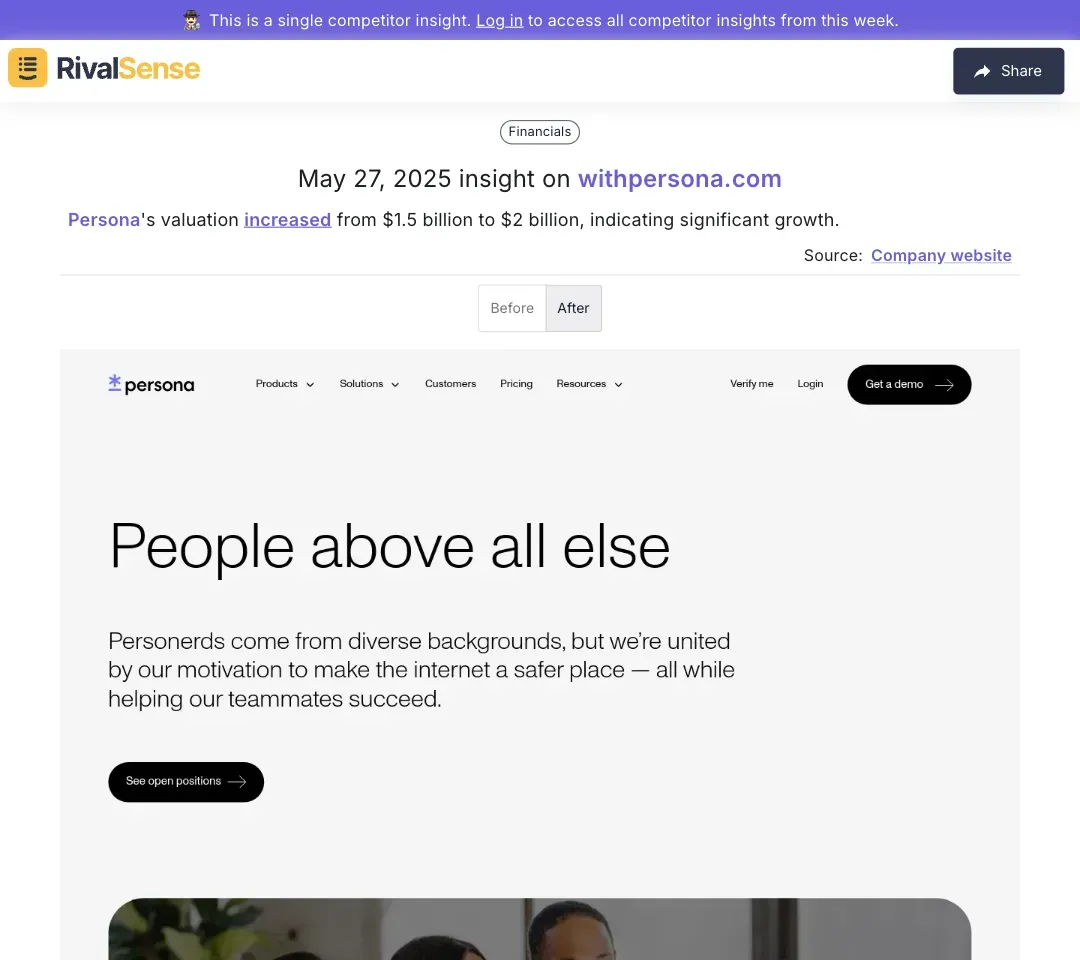🔍 Insurance Competitor Weakness Identification: Templates, Frameworks & Actionable Strategies
In the highly competitive insurance industry, identifying competitor weaknesses is not just about keeping tabs on the competition—it's about uncovering strategic opportunities to differentiate and elevate your own offerings. Understanding where competitors fall short allows your business to address unmet customer needs, refine your value proposition, and capitalize on gaps in the market. This proactive approach can drive customer acquisition, retention, and overall market positioning.
To effectively identify these weaknesses, start by analyzing competitors' customer feedback, service gaps, and operational inefficiencies. Tools like sentiment analysis, SWOT frameworks, and competitive benchmarking can provide actionable insights. For instance, if a competitor consistently receives complaints about slow claims processing, your business could highlight faster, more efficient claims handling as a key differentiator.
This article will explore practical methodologies, including templates and frameworks, to systematically uncover and leverage competitor weaknesses. From checklists for evaluating competitor digital presence to tips for monitoring their customer service performance, you'll gain the tools needed to turn insights into strategic advantages.
Key Frameworks for Analyzing Insurance Competitors
Insurance leaders need structured approaches to dissect competitor strategies. Frameworks like SWOT, Porter’s Five Forces, and PESTEL provide lenses to spot vulnerabilities and market shifts. Here’s how to apply them:
-
SWOT Analysis for Insurance Competitors

Example: When SmartBear replaced 'Zephyr' with 'QMetry' in their product lineup, competitors could leverage this transition period to highlight their own platform stability. Tracking product changes helps identify gaps in competitor roadmaps.- Strengths: Identify what competitors excel at (e.g., customer service, pricing)
- Weaknesses: Look for gaps in their offerings (e.g., limited coverage options)
- Tip: Use a SWOT template to systematically evaluate 2-3 key competitors monthly.
-
Porter’s Five Forces in the Insurance Sector
- Analyze competitive rivalry, new entrants, customer/supplier power, and substitutes
Checklist: Rate each force 1-5 to prioritize strategic actions
- Analyze competitive rivalry, new entrants, customer/supplier power, and substitutes
-
PESTEL Analysis for External Weaknesses
- Monitor political, economic, social, technological, environmental, and legal factors
Example: A competitor's failure to adapt to new climate risk regulations could become your compliance-focused marketing angle.
- Monitor political, economic, social, technological, environmental, and legal factors
Templates for Tracking Competitor Weaknesses
Systematic tracking requires tools tailored to insurance dynamics. Use these templates to operationalize insights:
- SWOT Template for Insurance: Compare competitors' product depth, claims processing times, and customer satisfaction scores
- Benchmarking Matrix: Track metrics like:
Metric Your Co. Competitor A Competitor B Claims Resolution 24 hrs 72 hrs 48 hrs Mobile App Rating 4.8★ 3.9★ 4.2★
Pro Tip: Automate data collection with tools like RivalSense to receive weekly updates on competitor moves like facility changes or leadership shifts. When Fassmer closed its Florida location and opened in Germany, observant competitors could reassess their own regional service coverage strategies.

Case Studies: Identifying and Leveraging Competitor Weaknesses
Real-world examples show the power of competitor intelligence:
-
The Claims Speed Play
A mid-sized insurer noticed rivals averaging 5-day claims processing. By reducing theirs to 48 hours and marketing this via comparison charts, they gained 12% market share in 6 months. -
The Digital Gap Exploit
When competitors lagged in AI-powered policy customization, one forward-thinking company launched "Instant Coverage Builder" – now their #1 customer acquisition tool.
Checklist for Success:
- [ ] Validate weaknesses across 3+ data sources
- [ ] Align fixes with core capabilities
- [ ] Train frontline teams on differentiation messaging
Implementing Findings into Your Business Strategy
Turning insights into action requires cross-functional alignment:
- Prioritize Weaknesses
Focus on vulnerabilities that align with your strengths. When Persona’s valuation jumped to $2B, savvy competitors doubled down on niche markets where Persona lacked depth.

- Operationalize Changes
- Marketing: Create comparison guides highlighting competitor gaps
- Product: Fast-track features competitors lack
- Sales: Arm teams with battle cards addressing common competitor shortcomings
Metrics to Track:
- % of marketing campaigns leveraging competitor weaknesses
- Customer mentions of your differentiators during sales calls
- Reduction in competitor-centric discount requests
Conclusion & Next Steps
Competitor weakness analysis isn’t a one-time exercise – it’s a muscle every insurance leader must develop. Start with these steps:
-
Immediate Action:
- Pick one framework (SWOT recommended)
- Analyze your top competitor this week
-
Build Infrastructure:
- Implement automated tracking (e.g., RivalSense’s weekly reports)
- Schedule monthly strategy sessions to review findings
-
Scale Intelligence:
- Expand analysis to 3-5 competitors
- Integrate insights into product roadmaps and marketing plans
🚀 Ready to Accelerate Your Analysis?
Try RivalSense free to automatically track competitor product changes, facility moves, financial shifts, and regulatory adaptations. Get your first competitor report today: https://rivalsense.co/
Final Checklist:
- [ ] Conduct initial competitor SWOT
- [ ] Set up monitoring system
- [ ] Schedule quarterly strategy reviews
- [ ] Train teams on intelligence applications
📚 Read more
👉 How Marsh Redefined Real Estate Acquisitions – And What Your Business Can Learn
👉 Outsmart Competitors: Leverage Tech Trends & Real-Time Insights for Strategic Wins
👉 🚫 Avoid These 4 Costly Mistakes in Competitor Thought Leadership Analysis
👉 Decoding Competitor Moves: How to Predict Event Participation & IP Strategies
👉 Market Intelligence Mastery: Strategic Positioning Insights for B2B Leaders 🚀
